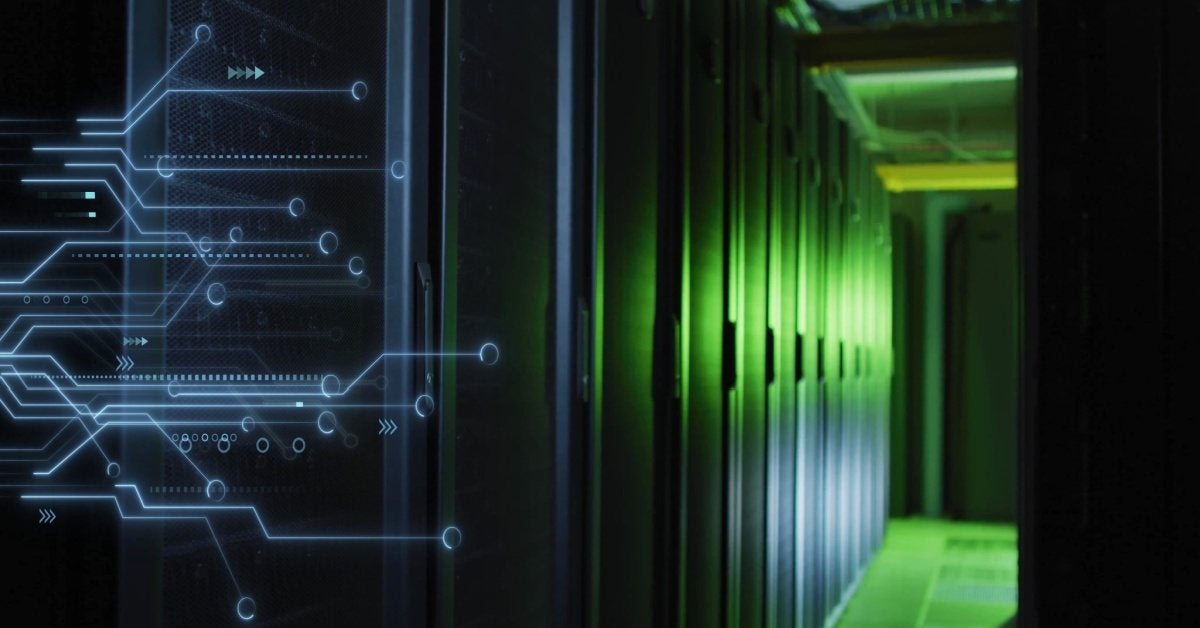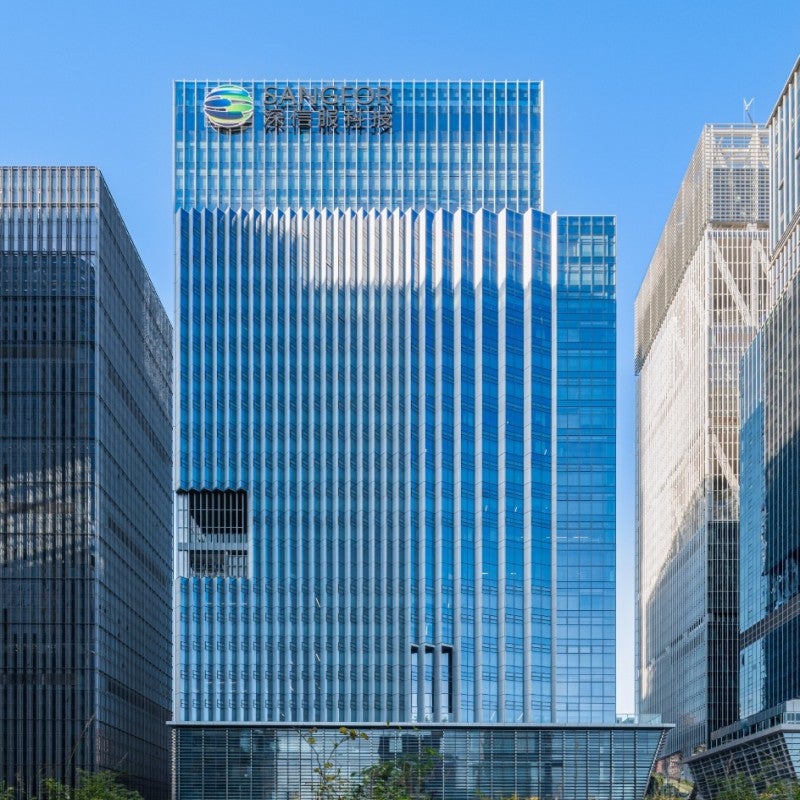What is Data Center Networking?
Data center networking refers to the interconnected system of switches, routers, servers, and storage devices that facilitate data exchange within a data center. Unlike traditional enterprise networks, data center networks must handle massive traffic volumes with low latency, high bandwidth, and robust security.
Key objectives include:
- Ensuring seamless communication between servers and storage.
- Supporting virtualization and cloud computing.
- Providing redundancy and fault tolerance.
- Enabling automation for efficient operations.

The Importance of Data Center Networking
Data center networking is a critical component in the modern IT landscape, enabling organizations to manage and secure their digital infrastructure efficiently.
- Centralizing Resources for Operational Consistency: Modern data center networking enables organizations to maintain consistent operations across distributed environments by providing a unified infrastructure that connects on-premises systems, cloud platforms, and edge locations. This centralized approach ensures seamless workload portability, real-time data synchronization, and simplified management through a single control plane, eliminating the inefficiencies of siloed network architectures.
- Automating Provisioning for Elastic Operations: Network automation has become essential for meeting the dynamic demands of modern IT environments. By leveraging infrastructure-as-code tools and software-defined networking, organizations can reduce provisioning times from hours to seconds, eliminate manual configuration errors, and dynamically scale resources to match workload requirements - all while maintaining consistent security and compliance policies across hybrid infrastructures.
- Enhancing Security in Evolving Threat Landscapes: Data center networks implement multi-layered security strategies including microsegmentation, end-to-end encryption, and AI-driven threat detection to protect against sophisticated cyber threats. These measures not only prevent unauthorized access and contain potential breaches, but also help organizations meet stringent compliance requirements for sensitive data across industries like healthcare and finance.
- Supporting Next-Generation IT Workloads: Modern networking architectures are specifically designed to meet the demanding requirements of emerging technologies. They provide the high-bandwidth, low-latency connectivity needed for AI/ML workloads, support massive east-west traffic flows for cloud-native applications, and enable real-time data processing at the edge - all while maintaining the reliability and performance expected from mission-critical infrastructure.
Data Center Network Architecture
Modern data centers utilize evolving architectures to optimize performance, scalability, and management.
Traditional Three-Layer Architecture
This hierarchical model consists of:
- Access Layer: Connects servers and storage devices to the network.
- Aggregation Layer: Consolidates traffic from access switches and enforces policies.
- Core Layer: Provides high-speed connectivity between aggregation layers and external networks.
While effective for legacy systems, this model struggles with scalability and east-west traffic (server-to-server communication).
Modern Architectures
Spine-Leaf Architecture
- Leaf Layer: Connects servers and storage devices.
- Spine Layer: Acts as a high-speed backbone, interconnecting all leaf switches.
- Benefits:
- Scalability (new leaf switches can be added without redesign).
- Low latency (equal-cost multipath routing).
- High bandwidth (non-blocking fabric).
Software-Defined Networking (SDN)
Decouples the control plane from the data plane, enabling centralized management and automation.
Hyper-Converged Infrastructure (HCI)
Integrates compute, storage, and networking into a single system, simplifying management.
Flat Networks
Reduces complexity by minimizing layers, improving efficiency for cloud-native applications.
Key Components of Data Center Networking
Servers, switches, storage, and security systems working together.
- Servers: Modern servers form the computational core, processing and storing data across physical, virtualized, and cloud environments. They increasingly incorporate GPU acceleration for AI workloads while adopting advanced cooling solutions for high-density deployments.
- Storage Systems: Contemporary data centers utilize tiered storage solutions including high-performance SAN, scalable NAS, and software-defined storage. Emerging technologies like NVMe-over-Fabrics enhance performance while distributed architectures ensure data resilience.
- Network Equipment: The infrastructure backbone features high-speed switches (400G+) and intelligent routers supporting modern protocols. These devices now offer built-in telemetry for real-time network monitoring and optimization.
- Load Balancers: Evolving beyond simple traffic distribution, modern load balancers integrate security features and cloud-native capabilities. They dynamically adjust to application demands while providing advanced traffic management.
- Security Appliances: Next-generation firewalls combine deep inspection with threat intelligence, while zero trust solutions are increasingly embedded into network fabrics. Microsegmentation prevents lateral threat movement within environments.
- Power & Cooling: Modern facilities employ intelligent power systems with predictive analytics and efficient cooling solutions like liquid cooling. These systems maintain reliability while optimizing energy usage.
- Cabling Infrastructure: High-speed fiber optics dominate backbone connections, supported by intelligent management systems. Copper retains its place for short-range applications in modern data centers.
- Physical Security: Comprehensive protection combines biometric access with AI-enhanced surveillance. Environmental monitoring systems provide complete facility oversight and threat detection.
Challenges in Data Center Networking
The main challenges include energy use, security risks, and scaling complexities.
- High Energy Consumption: Modern data centers face significant power demands, with large-scale facilities consuming as much electricity as small cities. Cooling systems alone can account for 40% of total energy usage, driving the need for innovative solutions like liquid cooling and AI-optimized thermal management.
- Scalability Limitations: Traditional three-tier architectures create bottlenecks when expanding capacity, often requiring complete redesigns. The industry is shifting toward more flexible spine-leaf topologies that enable incremental, pay-as-you-grow expansion without performance compromises.
- Cable Complexity: With thousands of connections in a single rack, cable management becomes increasingly challenging. Poor cable organization can lead to airflow obstruction, troubleshooting difficulties, and accidental disconnections during maintenance operations.
- Security Vulnerabilities: Data centers face evolving threats including sophisticated DDoS attacks, ransomware, and supply chain compromises. Maintaining compliance with regulations like GDPR and HIPAA adds another layer of complexity to security implementations.
- Performance Bottlenecks: The exponential growth of east-west traffic between servers creates unprecedented demands for low-latency, high-bandwidth interconnects. This is particularly critical for latency-sensitive applications like financial trading and real-time analytics.
Solutions and Innovations in Data Center Networking
AI automation and smart networking transforming operations.
- Intent-Based Networking (IBN): Modern IBN solutions leverage AI to translate business objectives into automated network configurations, enabling self-optimizing infrastructures. Platforms like Juniper Apstra continuously validate network state against intent, automatically correcting deviations while maintaining comprehensive audit trails.
- AI-Driven Network Operations: Advanced machine learning algorithms now predict equipment failures with 90%+ accuracy by analyzing telemetry data. AI-powered traffic engineering dynamically optimizes flows based on real-time application demands, improving utilization while reducing congestion-related latency spikes.
- Edge Computing Architectures: Distributed edge data centers bring processing closer to end-users, slashing latency for critical applications. These micro-data centers feature hyperconverged designs with automated orchestration, enabling seamless workload mobility between core and edge locations.
- Cloud-Native Networking: Next-generation networking integrates natively with container ecosystems through Kubernetes CNI plugins and service meshes. These solutions provide automated scaling, built-in observability, and consistent policy enforcement across hybrid cloud environments.
- Sustainable Infrastructure: Innovations like liquid immersion cooling and advanced power management algorithms are reducing PUE ratios below 1.1. Renewable energy integration and heat reuse systems are transforming data centers into more environmentally responsible facilities.
- Photonics Integration: Co-packaged optics and silicon photonics are enabling 800G+ connectivity while dramatically reducing power consumption per bit. These technologies are critical for supporting next-generation AI/ML workloads and massive-scale distributed systems.
Future Trends in Data Center Networking
Quantum security, edge computing, and green infrastructure ahead.
AI-Driven Automation & Self-Optimizing Networks
Next-gen networks will leverage deep learning to enable predictive maintenance, automated troubleshooting, and dynamic resource allocation. AI-powered network controllers will continuously analyze traffic patterns, predict congestion points, and automatically reroute traffic to maintain optimal performance - reducing human intervention by up to 80% for routine operations.
Quantum-Secured Networking
Quantum key distribution (QKD) will revolutionize data security, making networks virtually unhackable through physics-based encryption. Early implementations are already being tested in financial and government networks, with commercial quantum networking expected to mature by 2030.
5G-Enabled Edge Computing Ecosystems
The convergence of 5G and edge computing will create ultra-low latency (sub-1ms) networks capable of supporting advanced applications like holographic communications, autonomous vehicle coordination, and real-time industrial automation through distributed micro-data centers.
Sustainable & Carbon-Neutral Data Centers
Future facilities will achieve net-zero emissions through:
- Advanced immersion cooling systems
- Direct-to-chip liquid cooling
- AI-optimized power distribution
- On-site renewable energy generation
- Waste heat recycling for district heating
Next-Generation Interconnect Technologies
Emerging standards like 1.6Tb Ethernet and photonic networking will support exponentially growing bandwidth demands, while new memory-driven architectures will fundamentally reshape how data moves between processing and storage resources.
Cognitive Networking Fabrics
Self-learning network fabrics will automatically:
- Detect and mitigate security threats in real-time
- Optimize topology for energy efficiency
- Pre-provision resources for anticipated workloads
- Seamlessly integrate new edge nodes into the fabric
These innovations will collectively transform data centers from static infrastructure into intelligent, self-managing platforms capable of supporting the next decade's most demanding digital transformation initiatives.
Conclusion
Data center networking is evolving to meet the demands of cloud computing, AI, and real-time applications. Organizations must adopt scalable, automated, and secure architectures like spine-leaf and SDN to stay competitive.
FAQs
What is the role of a data center network?
It connects servers, storage, and applications to ensure fast, reliable, and secure data transfer.
How does data center networking differ from traditional networking?
It prioritizes low latency, high bandwidth, and scalability for server-to-server traffic.
What are the key components of a data center network?
Servers, switches, routers, storage, security appliances, and power systems.
How can data center networking improve security?
Through segmentation, encryption, AI-driven threat detection, and zero-trust policies.
What are the future trends in data center networking?
AI automation, edge computing, quantum networking, and sustainable designs.





